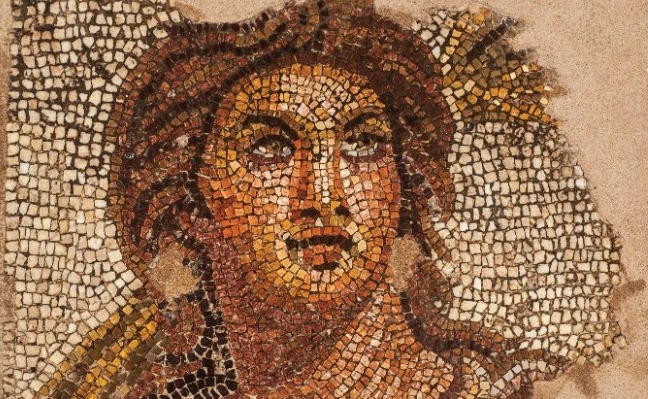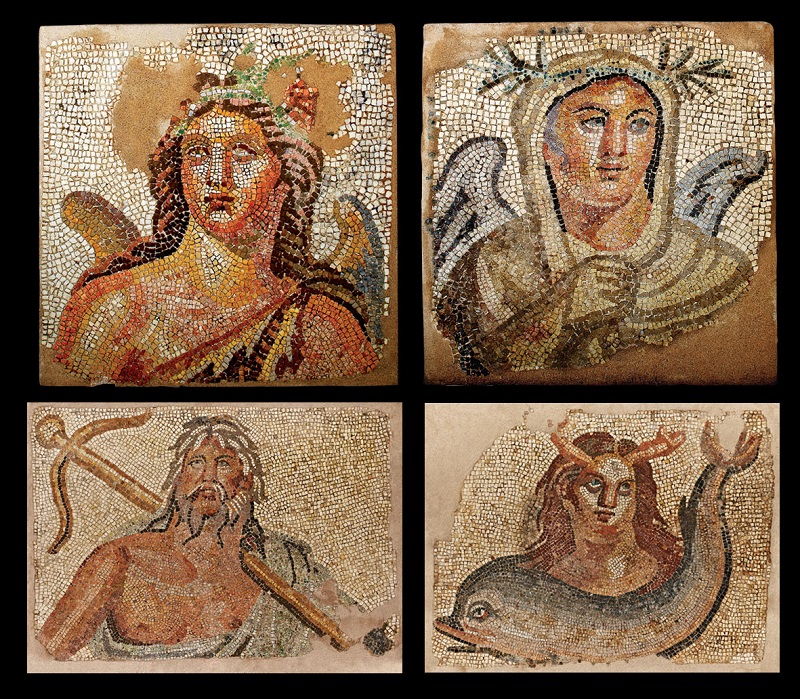
Stunning mosaics from Roman-era Thessaloniki are being displayed as a digital exclusive by the Archaeological Museum of Thessaloniki.
The “Mosaic of Summer,” which features the personification of the season, first discovered during excavations in the 1930s, is displayed alongside four more that depict the personified forms of Winter, Spring (or Autumn), the Ocean, and the Sea, which all adorned the floor of a Roman-era house.
The house itself likely stood within the city of Thessaloniki.
“Mosaic of Summer” unearthed in Thessaloniki
The glowingly beautiful mosaic has been dated back to the end of the third century AD and is part of a group of artworks.

The mosaics were able to be dated mostly due to stylistic choices depicted through them rather than other forms of analysis. These stylistic “giveaways” include imperfections in design and perspective, the artistic use of line to portray detail, pronounced stylization in the drapery, and simplistic color shading.
The mosaic itself depicts the bust of an enchanting figure which is meant to represent Summer. The person shown has long brown hair, and the head is tilted toward their left shoulder.
The figure’s himation (a style of garment worn in ancient Greece) leaves the right shoulder bare. A sheaf of wheat is displayed in the background, beginning at the right shoulder and ending to the left of the head.
The pebbles used in the mosaic are in their original colors, which are perfect for depicting the vivid, bright hues usually associated with summer. The pebbles provide the figure with a brown-gold skin tone perhaps in the spirit of a Summer tan.
Enchanting series of mosaics in Thessaloniki Roman-era villa
Although a singular cultural artifact is cause for celebration, this discovery is particularly special as a total of five mosaics were discovered at once.
Two of the mosaics depict Oceanus and Thalassa, or the ocean and the sea. Both of these jaw-dropping art pieces, one of which shows an artist’s rendering of a dolphin in the foreground, have been exhibited in the past.
The other mosaics are season-themed in keeping with the mosaic of Summer. Winter’s figure includes more grays and whites, colors emblematic of the cooler season.
As for the final seasonal mosaic, it is unclear whether it represents the season of Spring or Fall. The creator expressed the intended season, which remains a bit of a mystery to the observer, through a greater variety of colors within the mosaic, including shades of yellow, bronze, and even green.
The two mosaics depicting Winter and Spring/Fall are on display in the permanent exhibit “Thessaloniki, Metropolis of Macedonia,” which reopened to the public on May 12th, as coronavirus restrictions in Greece loosened.
“Many figures that depict seasons are [created using] several techniques and do not clearly show whether they are male or female,” Museum archaeologist Eleonora Melliou explained.
These figures are meant to display the season’s unique characteristics. In the case of the “Mosaic of Summer” found in Thessaloniki, plentiful summer crops are represented by a sheaf of wheat.
“We wanted to share an image of the summer, for the season. This is one of many mosaics and other objects in storage,” Melliou highlighted.
See all the latest news from Greece and the world at Greekreporter.com. Contact our newsroom to report an update or send your story, photos and videos. Follow GR on Google News and subscribe here to our daily email!



